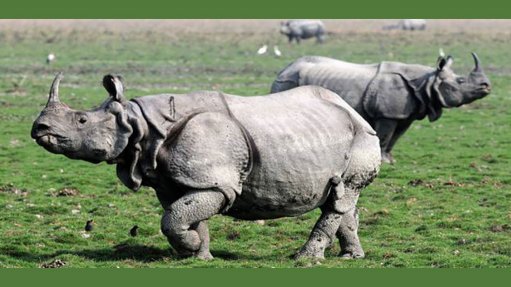
The Greater one-horned (or Indian) rhinoceros is now totally dependent on protected areas for its survival
Photo by: Kaziranga National Park
A study led by researchers at the University of Queensland in Australia has highlighted the importance of protected areas for wildlife conservation. Indeed, many endangered mammal species are dependent on these protected areas for their survival.
“Since the 1970s, the global network of protected areas has experienced a fourfold expansion, and some of these protected sites have been crucial to protect and even enhance wildlife populations,” reported University of Queensland Centre for Biodiversity and Conservation Science director Professor James Watson. “However, there’s increasing debate around the role of the global protected area estate in sustaining and recovering threatened species. What our research has clearly shown is that protected areas, when well-funded and well-placed, are incredibly effective.”
The researchers focused on 237 terrestrial mammal species that were threatened, and compared their distributions in the 1970s to their distributions today. They measured the changes in the ranges of their species, and then overlaid these ranges with the network of protected areas.
The study showed that in these protected areas, no less than 80% of the monitored mammal species had increased their coverage by at least 100% over this 50 year period. Further, 10% of these mammal species now lived mainly in protected areas.
“A great example is the greater one-horned rhinoceros (Rhinoceros unicornis), which now has 80 per cent of its range in a protected area,” he cited. “Their numbers have been decimated elsewhere – the species has lost more than 99 per cent of its distribution in the last 50 years. Now about 87 per cent of the remaining animals live in just two protected areas – Kaziranga National Park in India and Chitwan National Park in Nepal.”
Mammals were retreating into the protected areas, he affirmed. These areas were more and more important in protecting biodiversity, worldwide. The research made clear that what was needed was more, better-funded, well-managed protected areas. Further, efforts to re-expand and restore wildlife into lands outside the protected areas needed to be rewarded.
“There is little doubt that without protected areas we would have lost amazing species like tigers and mountain gorillas,” highlighted Watson. “We must focus on retaining Earth’s remaining intact ecosystems that contain key protected areas and prioritise efforts to restore habitat corridors between isolated reserves, providing opportunities for movement and genetic exchange.”